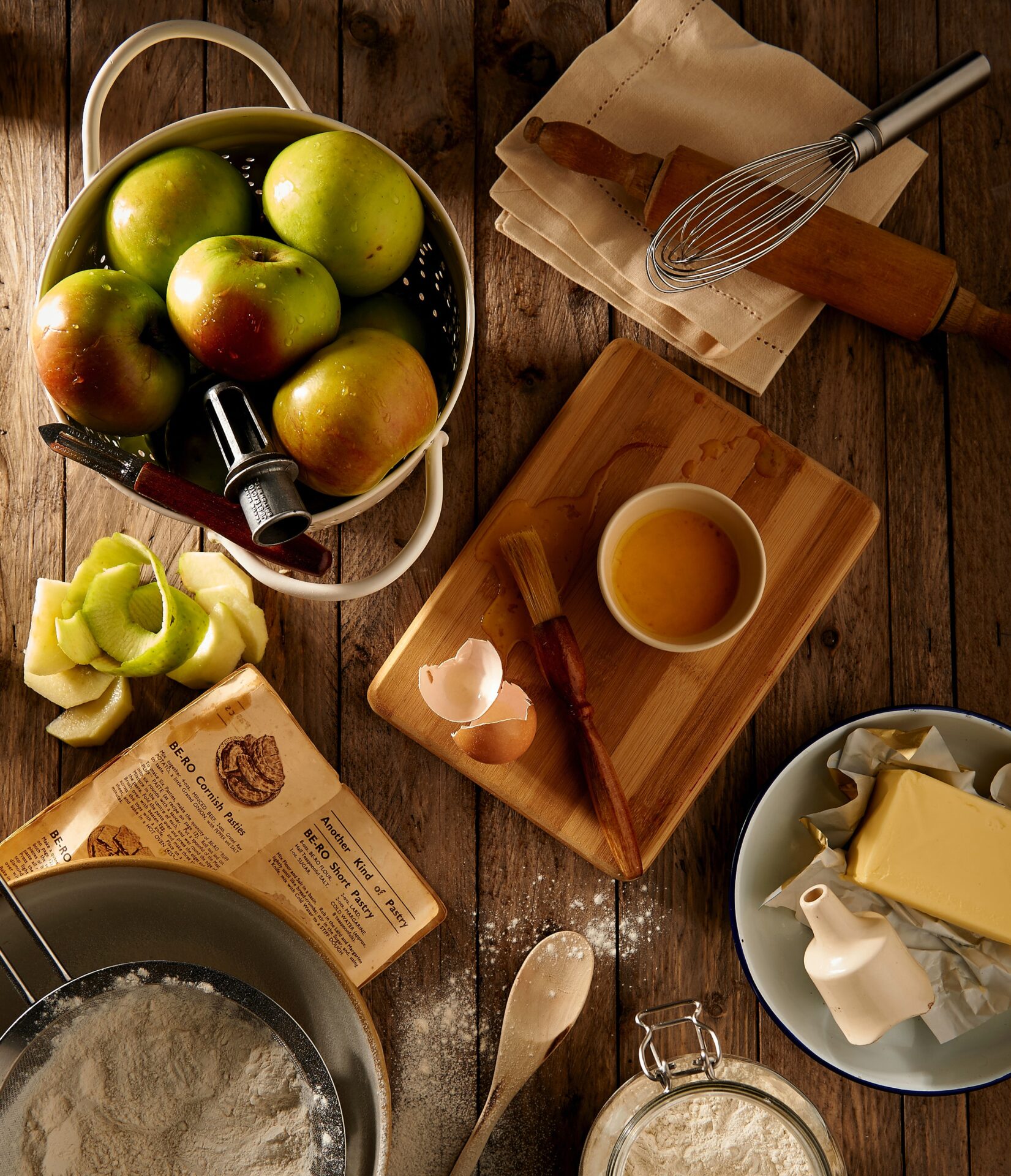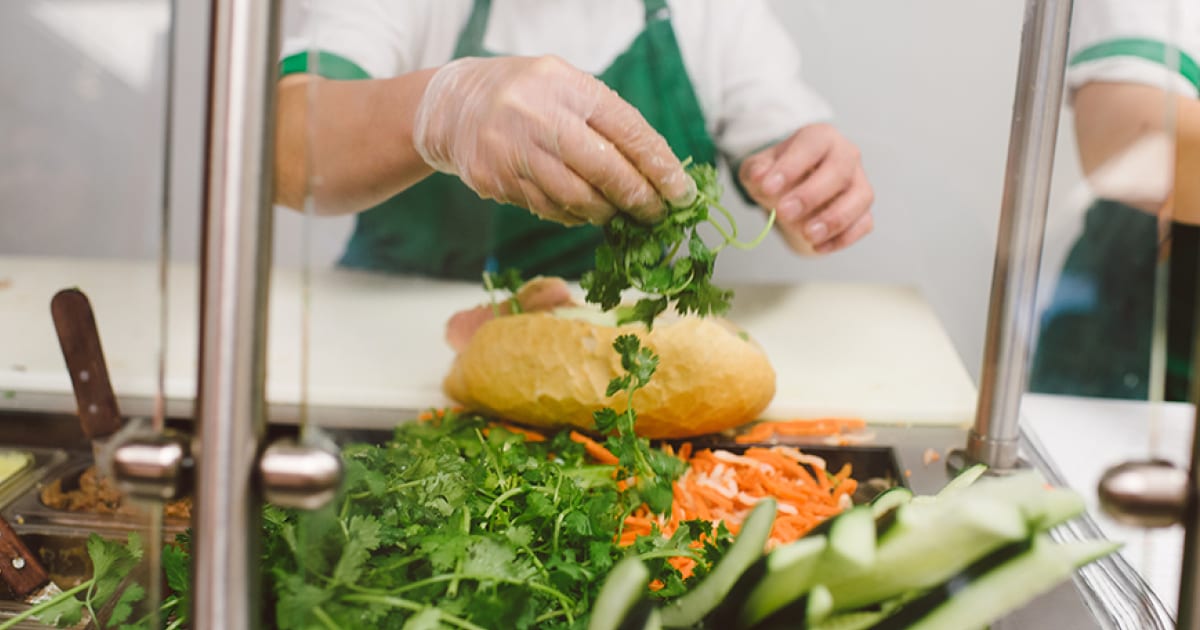In New Orleans, the bánh mì gives the po boy a run for its money
Vietnamese food is all the rage in New Orleans today. The city’s commercial thoroughfares are dotted with new Viet-styled eateries ranging from the bare-bones traditional, to the modern hipster, to the odd-duck fusion (the now-pervasive Vietnamese tacos, for example). Local chefs, meanwhile, have looked to Vietnamese cuisine as their latest culinary muse. John Besh is frequently cited as the first to shine a spotlight on Vietnamese ingredients and techniques. His much-circulated shrimp creole recipe ups the game on the old-school tomato-and-roux-smothered dish by adding lemongrass, fresh-chopped basil, and mint. Michael Gulotta, the former chef de cuisine at Besh’s flagship, Restaurant August, recently opened MoPho, where the flavors of the Mekong and the Mississippi River deltas muddy together in dishes like the roast duck po-boy and the fried soft-shell crab with fermented black beans.
The first Vietnamese immigrant-exiles came to the Gulf Coast in 1975, following the Fall of Saigon. Within a year, the first Vietnamese-owned restaurants and groceries sprung up around the New Orleans region, where Catholic charities, cheap housing, and a fishing industry welcomed the permanent settlement of thousands of families. Two communities sprung up in the Crescent City’s outlying areas—the Versailles neighborhood of New Orleans East and the West Bank just across the river from downtown. Within a decade, 15,000 Vietnamese were living in Louisiana. Due to national culinary trends, the unmistakable influence of Anthony Bourdain, and the commercial acumen of second- and third-generation Vietnamese, the cuisine eventually made inroads into the city proper, especially after Hurricane Katrina. I have not crunched the numbers, but I would wager that it is now easier in New Orleans to score an order of pho—a thick rice noodle and beef or chicken broth soup that has quickly become Vietnam’s most recognizable global export—than it is to buy a bowl of gumbo. Over a weekend this past June, I tasked myself with eating my way through the two original Vietnamese communities to discover the cuisine’s deep and varied local roots, and to uncover the reasons behind its recent popularity. Joined by photographer Denny Culbert and a rotating group of friends, I revisited cherished dishes, discovered new favorites, and consumed bowl after bowl after bowl of noodles.We started at Phở Tâù Bay, a West Bank eatery located in a shabby strip mall that for over three decades has arguably remained the place where most New Orleanians slurp their introductory bowl of pho. The soup here is cooked in the Hanoi-style, co-owner Karl Takacs Jr. tells me, its broth foggy with fat, strewn with slices of flank and brisket, and absent of the herbal notes found in the pho of Vietnam’s more tropical southern provinces. The recipe’s origins can be traced back to Vietnam War-era Saigon, where Takacs’s father, Karl Sr., a young American soldier, first fell under the charms of this same exact pho at a chain called Phở Tâù Bay, the mini-empire of a man named Vu Van Y. Karl Sr. then fell in love with that man’s daughter, Tuyet. The couple married in 1973; two years later Saigon collapsed, ending the fortunes of the family’s business. But in 1982, new to New Orleans and eyeing the upsurge of Vietnamese immigrants into the area, Karl and Tuyet jumped at an opportunity to restart Phở Tâù Bay. One restaurant quickly became five, all of which closed in the aftermath of Hurricane Katrina. Karl Jr. wanted to liquidate and move his young family to Colorado, but his customers kept inquiring about the future of the restaurant. This time his family was able to reopen and serve pho among the ruins of a hungry city.
Next, we followed Highway 90 along the Mississippi River’s crescent to Marrero and the newer Phở Gà Quang Minh (2651 Barataria Boulevard). Phở gà translates to “chicken noodle soup,” a Vietnamese specialty that remains the plucky little brother to pho’s classic beef preparation. Despite the season’s humidity, we shared a trio of soups. The restaurant’s namesake dish came laden with white and dark strips of meat, its broth slippery with what several other culinary cultures call schmaltz. The second bowl contained bún riêu cua, a stew of tomatoes, crab, rice vermicelli noodles, and other treasures I couldn’t quite identify. I uncovered a chunk of congealed pig’s blood, which I bit into with an audible and fleshy squeak. Last arrived mì vịt quay, a duck soup, rich and dark. Its broth hides a whole roast duck leg, umami-busting mushrooms, egg noodles, and submerged slivers of onion and duck crackling. The soup has become my preferred dish to eat over the past year, and an impossibly perfect thing to eat on this hot summer’s day.
DUCK SOUP
The afternoon’s third lunch, a meat feast really, came at Tân Định (1705 Lafayette Street), which has recently become the spot to eat and be seen among the city’s chef scene—several take their staff meals here on off days. Our friend Simone Reggie, a frequent customer here, chose from the long and varied menu lemongrass-glazed fried chicken wings, charbroiled short ribs that we dunked in a lemon and pepper bath, and roast quail served alongside deep-fried sweet and sticky rice cakes. We washed it down with traditional drinks: café sữa đá (French-dripped chicory coffee sweetened with condensed milk), chanh muối (salted limeade), and strawberry-flavored bubble tea floating with tapioca pearls. Each beverage not only refreshed but hinted at real or imagined links to New Orleans’s culinary culture. Tân Định sources its ground coffee, as do most all Vietnamese restaurants across the nation and the world, from the city’s famed Café du Monde. The limeade emphasized a predilection for salty-sweet combinations that many Southerners similarly enjoy (think pralines or even Coca-Cola) while the bubble tea might easily be confused for a Vietnamese snowball or, better yet, daiquiri. Maybe, I considered, the local leap from obscure ethnic cuisine to ubiquitous food was simply destined to occur.
Our fourth stop on the West Bank took us to Hoa Hồng 9, aka Nine Roses. Tu Doan opened this restaurant in 1990, at a time when Vietnamese restaurants had to masquerade as Chinese kitchens to suit less adventurous American appetites. The menu here is immense, pages filled with flimflam American-Chinese fare like crab rangoon and lo mein. But we came for one dish: cá kho tộ, clay-pot-braised catfish. Seasoned with ginger, garlic, and loads of black pepper, the fish was caramelized until its sauce-lacquered flesh reached a deep burnt-orange hue. It was very much like a dish I became infatuated with in Vietnam during a month-long solo eating trip in 2010. And now I had rediscovered it, hidden in plain sight, not six miles from my home.
Later we drove to the far reaches of New Orleans East in search of late-night eats and karaoke in the Versailles community. We found both at Nha Trang (4661 Alcee Fortier Boulevard), where our party of five was greeted like lost friends and welcomed with shots of Hennessy and cake (Hong, our waitress, was celebrating her birthday). With Hong’s urging, we ordered the hot pot, which we cooked ourselves on a tabletop propane stove by dipping raw seafood and vegetables into a fiery broth. But the real draw was the musical entertainment. An elderly couple stoically sang melancholic Vietnamese love songs, a tipsy group of late-thirty-somethings warbled their way through the best of Streisand and Celine Dion, and a young man sipped beer from a barstool while performing a pitch-perfect Eminem. It was an incongruous mix of languages and lyrics, and we traveled back to my house in a Hennessy-driven haze, not knowing if we had returned from halfway around the world.
At dawn the next morning, Denny and I, joined by his wife, Katie, returned to Versailles for the Vietnamese Farmers’ Market (14401 Alcee Fortier Boulevard), held each Saturday morning (from 6:00am – 9:00am) for more than thirty-five years. We arrived to find about twenty-five vendors: a handful of grandmotherly women (none whom seemed to speak English) plying an assortment of mints, basils, and leafy greens; a father and son with pens full of live geese and ducks; and an SUV loaded with vats of fresh tofu—the market’s best-seller—that jiggled and quaked in their individual plastic containers before liquefying in the sticky heat. Katie bought a calabash (also called a bottle gourd, long melon, or bầu nậm in Vietnamese), a green and yellow-speckled squash that stretched to almost four feet in length. Nearly everyone stopped to admire the purchase and offer cooking tips.
BANH MI
With bags of herbs and one kid-sized calabash in tow, we headed to our final destination, Dong Phuong Oriental Bakery and Restaurant (14207 Chef Menteur Highway), one of the area’s most storied old-line Vietnamese restaurants. There I selected a half dozen bánh mì, or Vietnamese sandwiches, filled with grilled pork, sausage, BBQ chicken, and pork liver pâté. Each came stuffed with mayonnaise and a garden of cucumber, cilantro, jalapeño, and picked carrot and daikon. In the land of the po-boy, the bánh mì has become a surprisingly omnipresent sandwich. But culinary translations and exchanges occur with sometimes astonishing and unpredictable results. Today, Dong Phuong delivers their baguettes to cafés and restaurants throughout New Orleans where, in a paragon of culinary blending, sandwiches are sold under the moniker Vietnamese po-boys.
We hurried back home in time to make a friend’s final backyard crawfish boil—our own South Louisiana version of hot pot—to close out the season. We sliced the calabash into chunks and tossed them into the seasoned water to soak up the spice. After the contents of the crawfish pot were spilled upon a table, we gathered round to hunt up our favorite additions to the boil: corn cobs and red potatoes, smoked sausage links, whole heads of garlic and onion. Scattered amid those more traditional ingredients, the calabash performed admirably, absorbing the boil’s bold flavors—cayenne and black pepper, salt and lemon—without sacrificing too much of its own texture. Unusual and unfamiliar but comfortingly so, the squash tasted as if it had always belonged.
TLP’s Travel Guide
Phở Gà Quang Minh
2651 Barataria Boulevard
Recommend: Traditional Soups
Dong Phuong Oriental Bakery and Restaurant
14207 Chef Menteur Highway
Recommend: Bánh Mì (The Vietnamese Po Boy)
Hoa Hồng 9 (Nine Roses)
1100 Saint Stephens Street
Recommend: Cá Kho Tộ (clay-pot-braised catfish)
Nha Trang
4661 Alcee Fortier Boulevard
Recommend: Karaoke
*Tân Định
1705 Lafayette Street
*Chef’s Hot Spot
Vietnamese Farmers Market
14401 Alcee Fortier Boulevard
Open Saturdays from 6-9 am
share
trending content
-
Get To Know Roanoke, Virginia
-
Shrimp and Grits: A History
by Erin Byers Murray -
New Myrtle Beach Restaurants Making Waves
-
FINAL VOTING for Your Favorite Southern Culinary Town
-
New Restaurants in Arkansas









